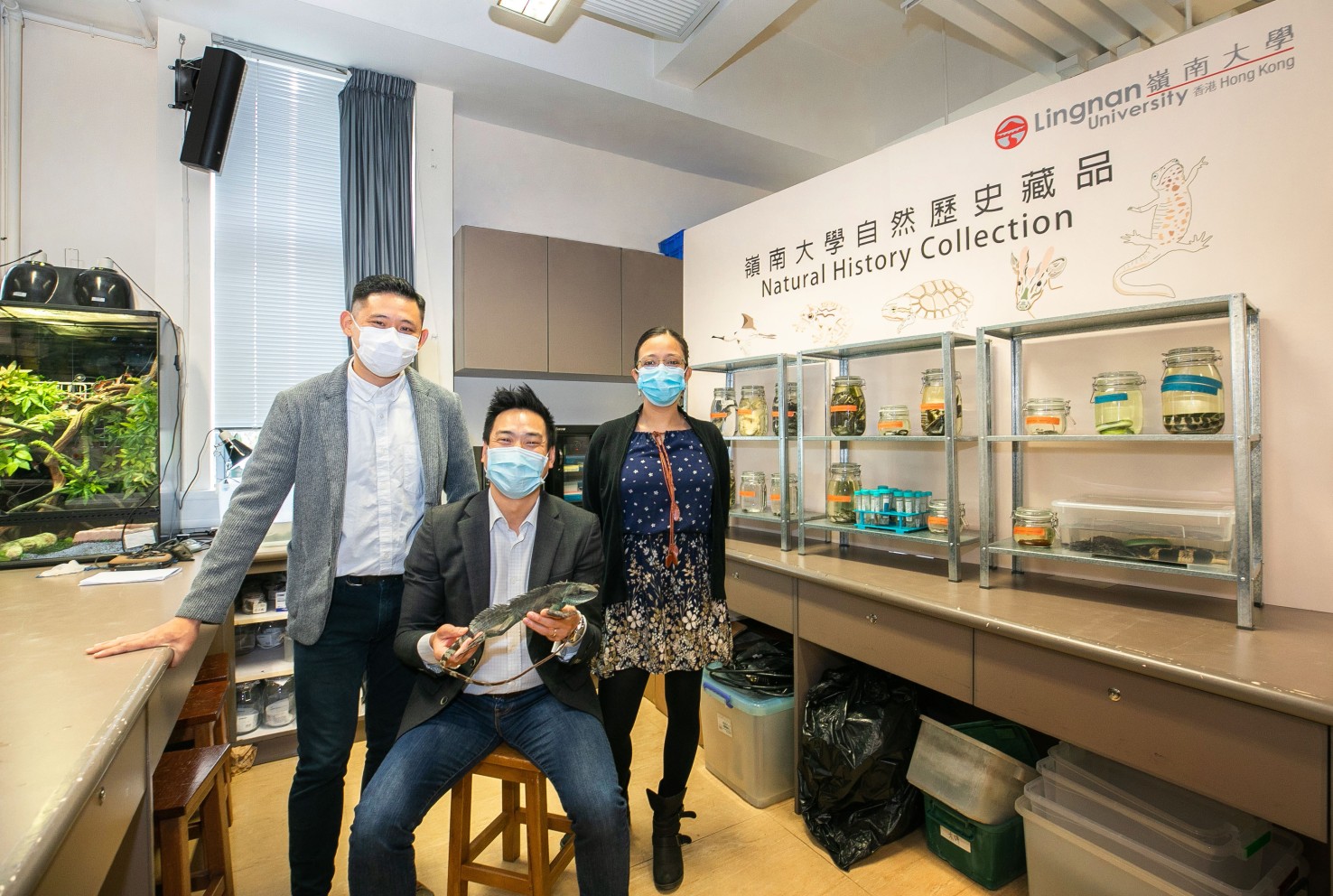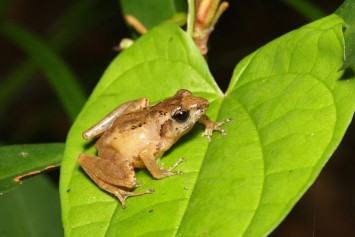LU builds unique specimen collection of amphibians and reptiles in Hong Kong for conservation and education

Prof Sung Yik-hei, Assistant Professor (left), Prof Jonathan Fong, Assistant Professor (middle), Dr Itzue Caviedes-Solis, Postdoctoral Fellow (right) of the Science Unit team of LU.
Lingnan University (LU) has recently established a publicly accessible Natural History Collection (the Collection) of specimens of local amphibians and reptiles to document Hong Kong’s biodiversity, and for research, conservation and education purposes.
The Science Unit of LU started the Collection in 2019, and has currently documented over 500 individual specimens, representing 92% of the amphibian species and 36% of the reptile species in Hong Kong. It consists of preserved specimens, tissue samples for genetic analysis, photographs and associated data (location, date, habitat type). By accessing the Collection’s website, the general public reaches the database of various species of amphibians and reptiles which have high conservation or scientific research values, including Romer’s tree frog, the white-headed blind snake, etc.
The Collection contributes to the goals of Hong Kong Biodiversity Strategy and Action Plan, and is funded by The Environment and Conservation Fund of the HKSAR Government.
The Science Unit team is composed of project leader Prof Jonathan Fong, Assistant Professor, Prof Sung Yik-hei, Assistant Professor, Dr Itzue Caviedes-Solis, Postdoctoral Fellow, and MPhil student Ivan Lam.
The Collection preserves data and evidence of present-day amphibian and reptile diversity, which are important to understand habitat changes due to global warming and Hong Kong’s rapid development. By preserving specimens in a collection, characteristics of their environment are also preserved. The presence of a species in a region becomes a snapshot of diversity through time in the collection can tell us about the climate of a region and the ecology.
“As technology advances, collections are also important resources for genetic studies. The Collection can be compared to a library, while the specimens are like books. Specimens represent a valuable resource for future generations, often for uses that we currently cannot predict. For example, the impact of climate change was revealed by comparing specimens from modern times to those collected in 1911, when there was no concept of climate change,” Prof Fong said.
One of the most precious species in the Collection is Romer’s tree frog (Liuixalus romeri), which is found solely in Hong Kong and considered endangered by the International Union for Conservation of Nature (IUCN). Its native habitat is on the outlying islands of Hong Kong (Lantau, Chep Lap Kok, Po Toi and Lamma). During the construction of the new airport in 1992, the Chep Lap Kok population of Romer’s tree frog was saved by being translocated to multiple localities across Hong Kong. The Collection will provide valuable data for the conservation management of Romer’s tree frog, as well as providing a case study on conservation translocation.
The Collection is accessible to the public. All data on its website is managed by Arctos, an international online database engine. Arctos is a consortium of museums which collaborate with universities all over the world, and LU is their first and only Asian member.
The Collection will loan specimens to local and international scientists and schools for research and teaching purposes. The Science Unit will also arrange public tours for schools and the general public.
Prof Fong said that the Collection’s current focus is on Hong Kong’s amphibians and reptiles, but it may expand in the future to include other organisms. To bridge the disconnection between researchers and the general public, the project team has worked with Lingnan students and staff to establish a bimonthly bulletin covering a scientific research project through personal stories so as to reach and inspire more people to get involved in conservation.
For details of LU’s Natural History Collection, please visit: https://lingnancollection.wixsite.com/naturalhistory.


